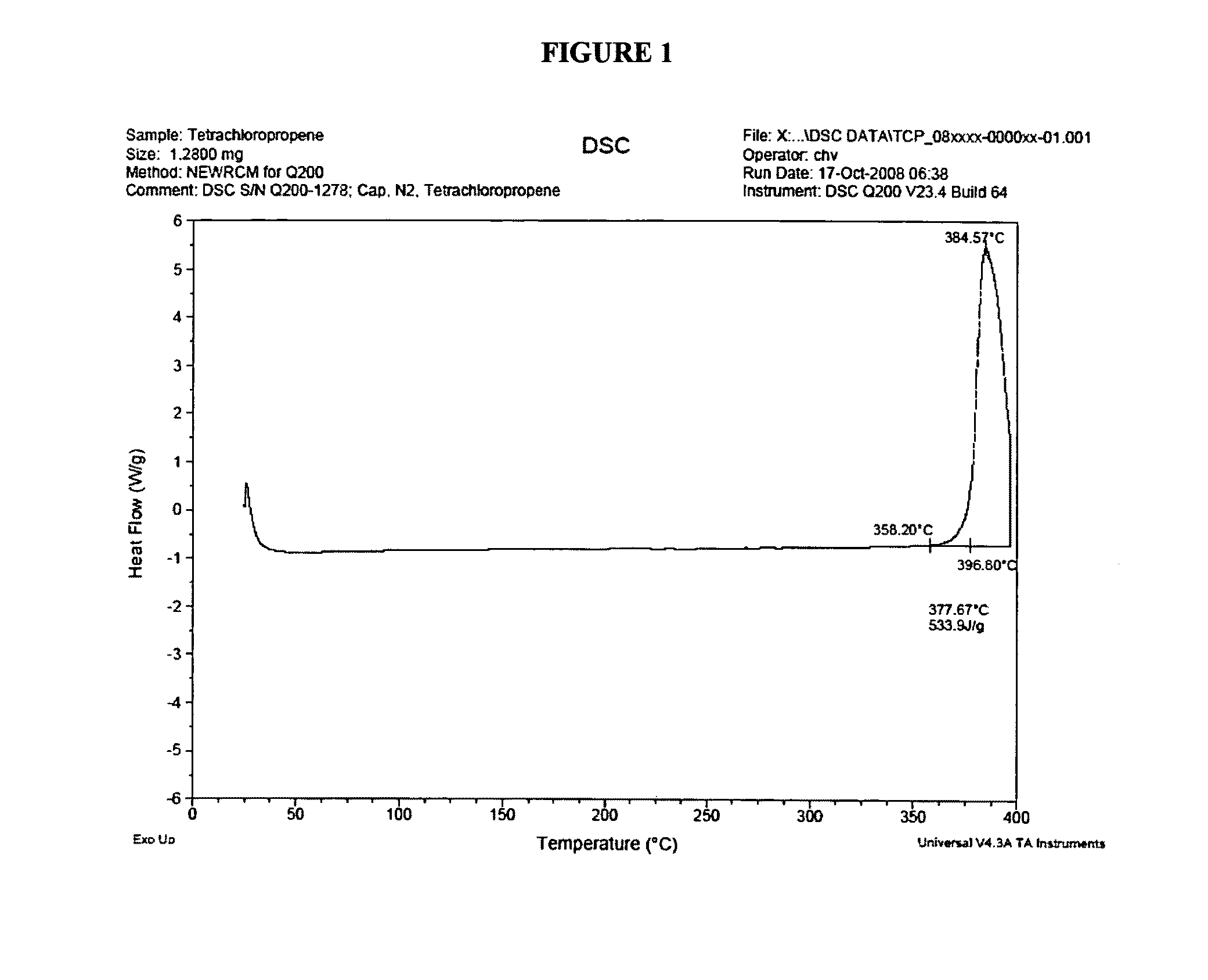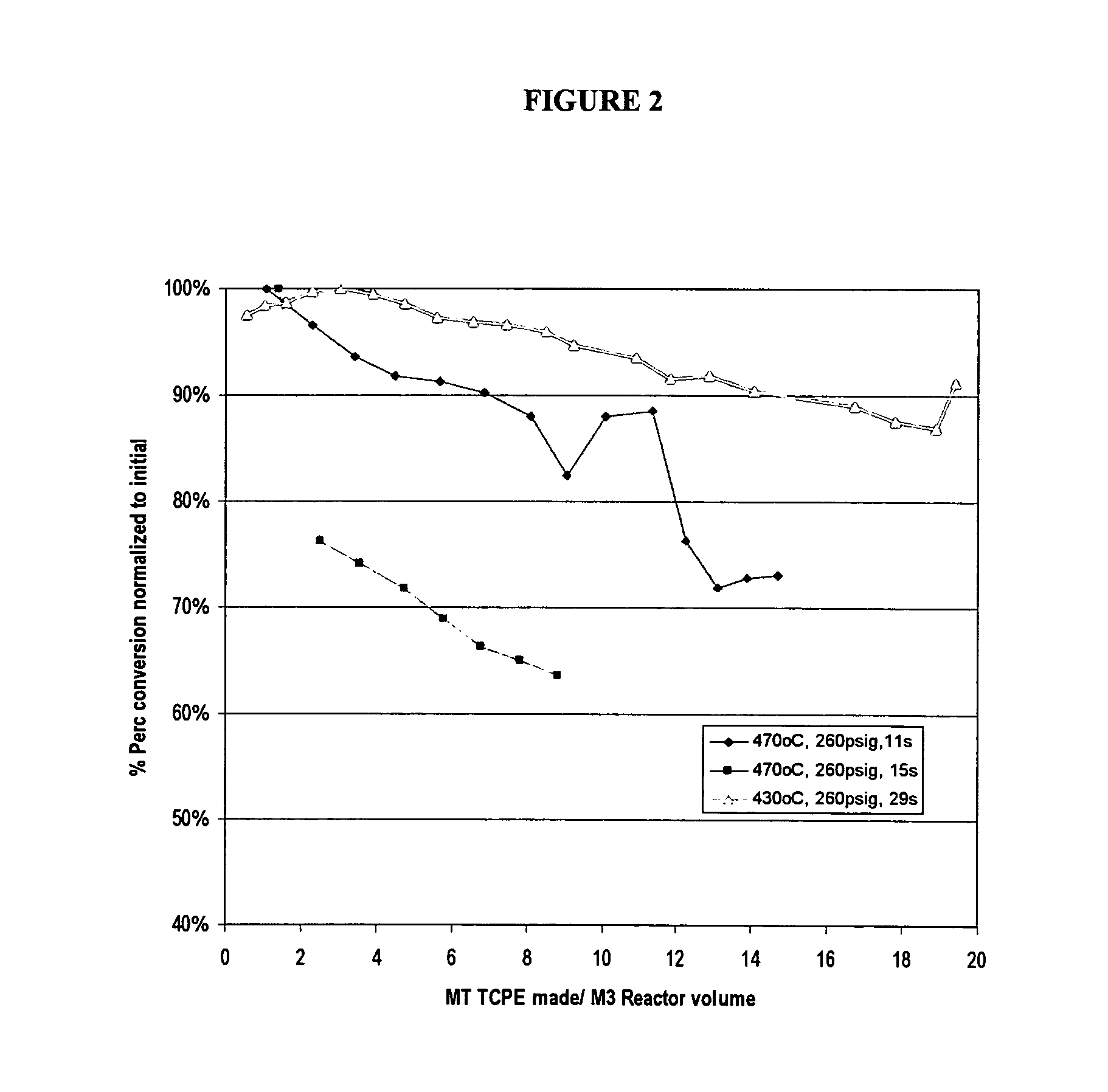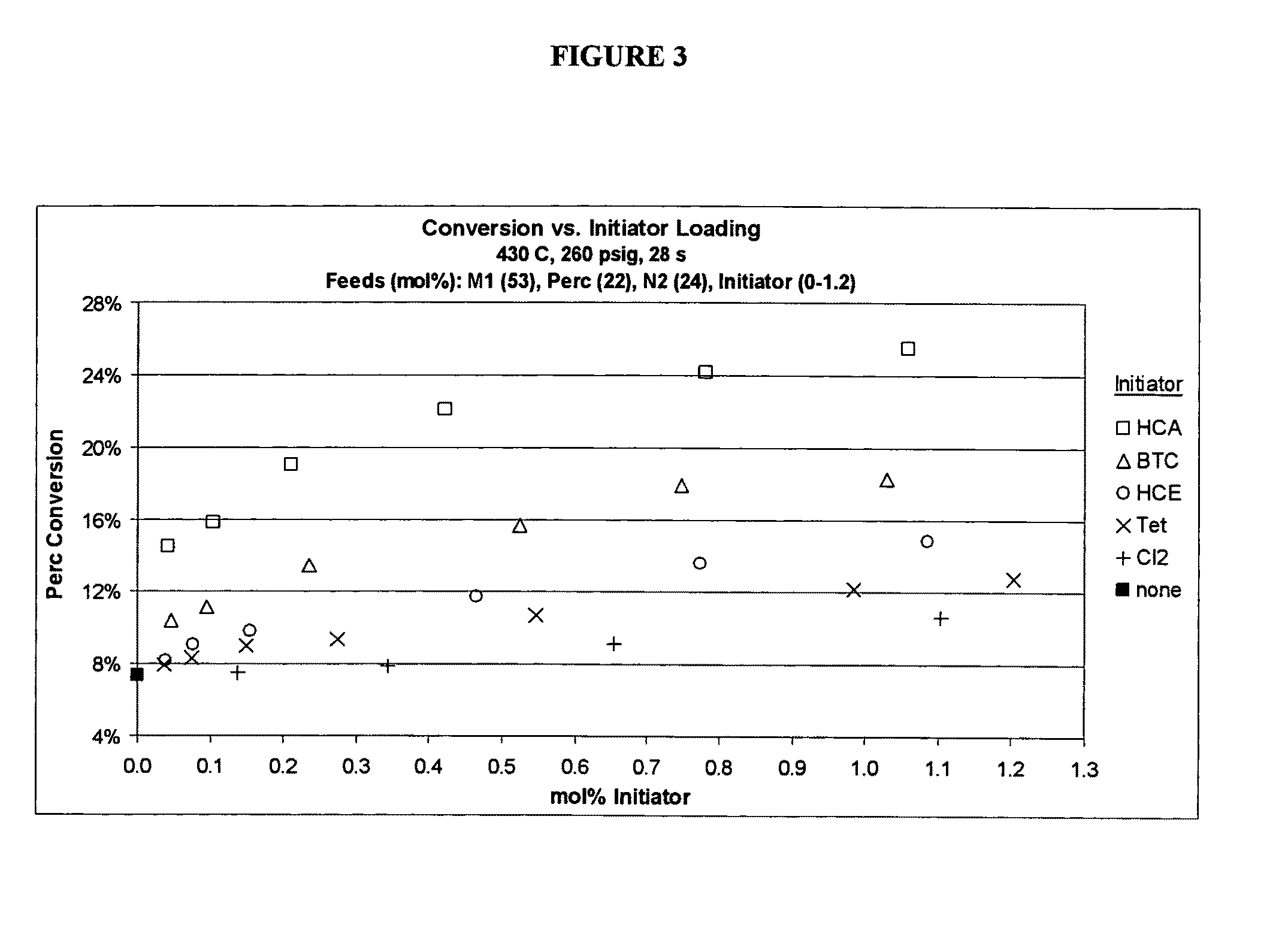Process for the production of chlorinated and/or fluorinated propenes
a technology of chlorinated and fluorinated propenes, which is applied in the field of chlorinated and/or fluorinated propene production processes, can solve the problems of limited commercial availability of chlorinated and/or fluorinated propenes, limited commercial applicability, and limited commercial application, etc., and achieves significant time, operating and capital cost savings, energy saving, and good product yield
- Summary
- Abstract
- Description
- Claims
- Application Information
AI Technical Summary
Benefits of technology
Problems solved by technology
Method used
Image
Examples
example i
Impact of the Combination of Increased Molar Ratio of MeCl to Perchloroethylene and Increased Pressure on the Production of 1,1,2,3-tetrachloropropene
[0054]A flow of 200 sccm of Perc will be established through a glass tube reactor (¾″ inner diameter, 40″ in length) packed with glass beads having a porosity of 0.35 (ratio of void volume of the reactor filled with glass beads to reactor volume without glass beads). The temperature within the reactor and that of the reactants (mixed at the entrance of the reactor) will be adjusted to achieve isothermal conditions of about 548° C. Flow to the reactor will be adjusted to provide a molar ratio of MeCl / Perc of at least about 0.75 at substantially ambient pressure and the reaction allowed to proceed for at least about 3 seconds. Then, the molar ratio of MeCl / Perc will be adjusted to about 2.5 and the pressure increased to about 7 psig, and the reaction allowed to proceed for at least about 5 seconds. Finally, the MeCl / Perc ratio will be ad...
example ii
Impact of the Combination of Lowered Temperature and Increased Pressure on the Production of 1,1,2,3-tetrachloropropene
[0057]A flow of 200 sccm of Perc will be established through a glass tube reactor (¾″ inner diameter, 40″ in length) packed with glass beads having a porosity of 0.35. The initial temperature within the reactor and that of the reactants (mixed at the entrance of the reactor) will be adjusted to achieve isothermal conditions of about 548° C. and the pressure adjusted to be about 7 psig. The flow will be adjusted to provide a molar ratio of MeCl / Perc of about 2.5 and the reaction allowed to proceed for at least about 3 seconds, at which time the temperature will be decreased to about 450° C. and the pressure increased to about 200 psig. The reaction will be allowed to proceed at these conditions for at least about 52 seconds. Then, the temperature will again be decreased to about 400° C. Estimated MeCl and Perc conversions and % selectivity to TCPE are shown below in ...
example iii
Impact of the Use of an Catalyst / Initiator and Elevated Pressure on the Production of TCPE
[0060]A flow of 200 sccm of Perc will be established through a glass lined tube reactor (¾″ inner diameter, 40″ in length) packed with glass beads having a porosity of 0.35. The initial temperature within the reactor and that of the reactants (mixed at the entrance of the reactor), will be adjusted to achieve isothermal conditions of about 548° C. and the pressure adjusted to be about 1200 psig. The flow will be adjusted to provide a molar ratio of MeCl / Perc of about 2.5 and to include an amount of an initiator, either CCl4 or Cl2. The reaction will be allowed to proceed for at least about 5.3 minutes, at which time the pressure will be decreased to about 700 psig. The reaction will be allowed to proceed at these conditions for at least about 3.1 minutes. Estimated MeCl and Perc conversions and % selectivity to TCPE are shown below in Table 3.
[0061]
TABLE 3Estimated Effect of Adding Initiator an...
PUM
| Property | Measurement | Unit |
|---|---|---|
| temperature | aaaaa | aaaaa |
| pressure | aaaaa | aaaaa |
| pressure | aaaaa | aaaaa |
Abstract
Description
Claims
Application Information
 Login to View More
Login to View More - R&D
- Intellectual Property
- Life Sciences
- Materials
- Tech Scout
- Unparalleled Data Quality
- Higher Quality Content
- 60% Fewer Hallucinations
Browse by: Latest US Patents, China's latest patents, Technical Efficacy Thesaurus, Application Domain, Technology Topic, Popular Technical Reports.
© 2025 PatSnap. All rights reserved.Legal|Privacy policy|Modern Slavery Act Transparency Statement|Sitemap|About US| Contact US: help@patsnap.com



